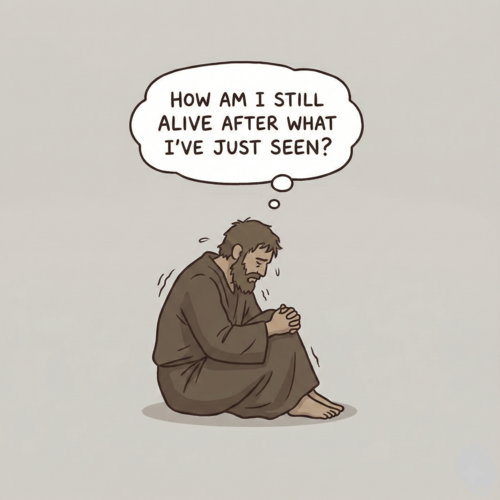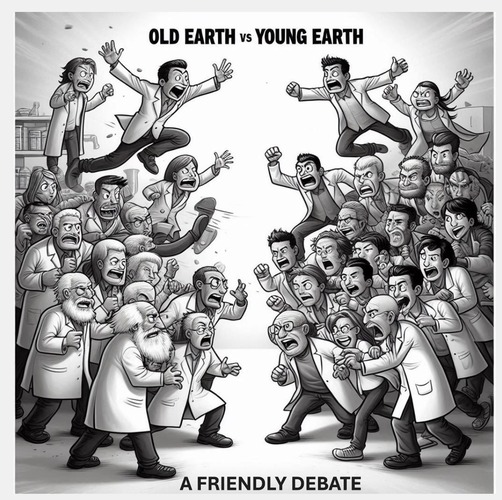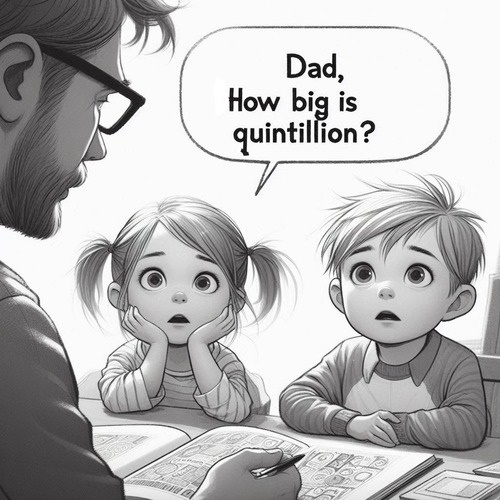6000 Years Or 4.5 Billion: How Old is the Earth Really?
How old is the Earth really? The question of Earth’s age has long fascinated humankind.
Several scientific tests for determining the age of the Earth, considered robust by many in the scientific community, appear to indicate our planet may be billions of years old. However, other scientists—particularly those who advocate for a young Earth—question the underlying assumptions and methodologies of these tests. While they represent a minority view in the scientific community, these scientists hold equally valid credentials in their fields. Young Earth proponents argue the apparently inflated numbers for the planet’s age may be due to several factors. They suggest the starting assumptions of various dating methods, as well as the methodologies themselves, may lead to gross overestimations.
Join us, as we explore some of these factors that could influence age estimates…
Radiometric Dating: Measuring the Age of Rocks
Radiometric dating is a method scientists use to estimate how old rocks and fossils are—by measuring the decay of radioactive isotopes in them. The method, some scientists argue, is scientifically robust and indicates the earth may be billions of years old. While many scientists trust this method, others who believe in a young Earth have questions about it:
- Assumption of Initial Conditions: Scientists have to make educated guesses about what was in the rocks when they were formed. If these guesses are wrong, their estimates may indicate the rocks are older than they really are. Imagine you have a sandTimer with sand flowing from the top to the bottom. If you want to know how long it’s been running, you need to know how much sand was in each half when it started. With rocks, scientists have to guess how much of certain substances were present when the rock was formed. If they guess wrong, it’s like misjudging the starting amount of sand, which could make the rock seem older than it really is.
- Closed System Prerequisite: For any estimate of Earth’s age to be accurate, a closed system is a prerequisite. In other words, we assume nothing has been added or taken away from the isotopes in the rocks since they formed. Think of a sealed jar of cookies: if you count the cookies after a week, you expect the number to be the same as when you sealed it. Scientists assume rocks are like sealed jars—nothing added, nothing taken away. But some people believe a massive flood, as described in the Bible, could have affected rocks—rather like someone opening the cookie jar and changing its contents. This could make the measurements less reliable.
- Contamination Risks: Imagine you’re trying to measure how much sugar is in a cake recipe. If even a tiny bit of salt accidentally falls in, it could change how sweet the cake tastes, leading to wrong conclusions about the recipe. Similarly, if a small amount of outside material gets into a rock, it can significantly change the results of radiometric dating. This is why it’s crucial to have very clean samples for accurate dating.
- Decay Rate Consistency: Picture a clock where the hands move at a constant speed. Scientists assume that the special substances in rocks (called isotopes) change at a constant rate, like clock hands. However, some people question whether this rate has always been the same. They wonder if events described in the Bible, like the creation of the world or a great flood, could have caused these “clocks” to run faster or slower at different times in the past.
Ice Core Sampling: Reading Earth’s Frozen Diary
Imagine Earth’s ice sheets as a giant, frozen diary. Scientists study this diary by drilling deep into ice and pulling out long cylinders called ice cores. Each layer in these cores is like a page in Earth’s history book, containing tiny bubbles of air and bits of dust from long ago. While this method gives us exciting peeks into the past, some researchers, especially those who believe in a young Earth, point out a few things to consider:
- Blurry Pages in the Ice Diary: As we go deeper into the ice, it’s like the handwriting in our diary gets messier. After a few thousand years, it becomes really hard to tell one year’s layer from another. Interestingly, this difficulty starts around the time that lines up with when some believe God created the Earth.
- A Squished and Stretched Diary: Imagine if someone sat on our diary or pulled it like a rubber band. The ice sheets have been squished by their own weight and stretched by movement over time. This makes it tricky to read the layers correctly, and might make scientists think the ice is older than it really is.
- A Diary That Doesn’t Go Back Far Enough: The oldest ice core we’ve found is about 800,000 years old. While that sounds super old, it’s actually just a small part of how old many scientists think the Earth is. For those who believe in a young Earth, even this age is too old, but it’s much closer to their timeline than other methods suggest. Young Earth scientists often argue that this 800,000-year figure is based on assumptions about past climate conditions and ice accumulation rates. They propose that events like the global flood described in the Bible could have caused ice to accumulate much faster than we see today, potentially forming these deep layers in just a few thousand years.
By looking at ice cores this way, we can see how different people might read Earth’s icy diary differently. It reminds us that while science gives us amazing tools to explore our world, there’s always room for different interpretations, especially when we’re trying to understand events from so long ago.
Astronomical Methods: Measuring the Age of the Stars
When scientists try to figure out how old the universe is, they use some clever tricks with telescopes and math. But these methods make some guesses that might not match up with what the Bible says about creation. Let’s look at three big ideas:
- The Cosmic Ruler Problem: Imagine trying to measure how far away your neighbour’s house is by using a ruler made of stretchy rubber. It may work okay for nearby things, but gets less accurate the further you go. Scientists use a similar method called the “cosmic distance ladder” to measure how far away stars are. But tiny mistakes can add up, making it hard to be sure about the age of faraway things in space.
- The Colour-Shifting Universe: When scientists look at distant stars and galaxies, they see their light shifted towards red, kind of like how a train’s whistle sounds different as it moves away from you. They think this means the universe is expanding evenly in all directions. But what if God created the universe in a special way, as described in Genesis, that doesn’t fit this idea? It could change how we understand what we see in space.
- The Cosmic Mystery Ingredients: Scientists believe there’s stuff in space we can’t see called “dark matter” and “dark energy.” It’s a bit like trying to bake a cake when you can’t see or taste some of the ingredients—you’re not quite sure what’s going on! This reminds us there’s still a lot we don’t understand about the universe. It shows us how God’s wisdom is so much greater than what we can figure out on our own.
These ideas help us see that while science gives us amazing ways to explore the universe, there’s still room for differing interpretations. It’s also a reminder that studying the stars can be a way of appreciating the incredible complexity of God’s creation.
Tree Ring Dating: Counting Nature’s Calendar
Tree ring dating, or dendrochronology, is like looking at nature’s calendar. It’s a way of telling time that might fit better with what the Bible says about how old things are. Here’s why:
- Nature’s Imperfect Calendar: Trees usually grow one ring each year, but sometimes they might grow extra rings or skip a year. This is like having a calendar where some days are missing or repeated. These quirks could explain why tree ring dates might not always match up with what the Bible tells us.
- A Short-Term Time Machine: Tree ring dating only works for the last few thousand years because we need living trees or well-preserved wood to count the rings. Interestingly, this timeframe is closer to what many believe the Bible suggests about Earth’s age.
- Trees Tell Different Stories: Trees in different places grow differently because of weather and soil. This reminds us of how God created a world with many different environments, each with its own unique story to tell.
Stratigraphy: Reading Earth’s Layer Cake
Stratigraphy is like studying Earth’s history by looking at its layers, kind of like examining a giant layer cake. This method can be understood in a way that fits with what the Bible tells us:
- Earth’s Messy Layers: Sometimes, the layers of rock are mixed up or worn away. Some scientists think this could be evidence of the great flood described in the Bible, which would have caused massive changes to the Earth’s surface.
- Fossil Clues: Certain fossils are found in specific layers of rock. Some researchers suggest this could show the order in which different animals were buried during the flood. For example, sea creatures might have been buried first, followed by land animals.
- Fast or Slow Layer-Making: The layers of rock we see today could have formed at different speeds. Some might have been made slowly over time, while others could have formed quickly during big events like the flood described in the Bible. This idea helps explain how we can see so many layers in a shorter time frame.
These ways of looking at tree rings and rock layers show us how scientific observations can be interpreted in different ways, sometimes matching up with what the Bible tells us about Earth’s history. It reminds us that studying nature can be a way of understanding God’s work in creating our world.
Conclusion: So How Old is the Earth Really?
As we explore the various ways scientists try to measure Earth’s age, we begin to see the answer isn’t quite as straightforward as they often make it sound. While many scientists believe our planet is billions of years old, we soon discover the issue is far from settled. There’s still room for differing interpretations, including those that align with a younger Earth as described in the Bible.
Each method we’ve looked at—from studying rocks and ice cores to counting tree rings and gazing at stars—gives us a piece of the puzzle. However, like all puzzles, the picture isn’t always clear at first glance: rocks tell ancient stories, but the details can be hard to read. Ice cores provide a frozen timeline, but the timeline may not stretch as back as far as we think. Tree rings offer a natural calendar, but it’s a relatively short one. The stars and galaxies hint at vast ages, but there’s still much we don’t understand about the universe. Earth’s layers paint a picture of the past, but big events such as floods may have changed that picture dramatically.
Remember, throughout history, majority opinions in science have sometimes been proved wrong. So while it’s important to respect the work of scientists, it’s okay to question and explore alternative viewpoints. In the end, whether we believe the Earth is young or old, this journey of discovery can deepen both our understanding of the world and our appreciation of the Creator. We’re reminded faith and science aren’t opponents, but rather two paths that can lead us to a greater appreciation of the magnificent planet we live in—irrespective of how old it may be.
How Old is the Earth Really?—Related FAQs
What are some strong arguments for a young Earth that students can use in academic discussions? Focus on evidence such as the preservation of soft tissue in dinosaur fossils: scientists have found soft, stretchy tissue inside some dinosaur fossils. This is surprising if dinosaurs lived millions of years ago, but makes sense if they lived more recently. You could also focus on rapid fossil formation—we’ve seen fossils form rapidly in modern times, like after Mount St. Helens erupted, proving fossils don’t always need millions of years to form. You could also discuss how we have evidence of trees turning to stone standing up: we have evidence of fossilised trees passing through multiple rock layers. This suggests these layers formed quickly, rather than over long periods. Also, do discuss problems with radiometric dating: This method often gives very different ages for the same rock. It also relies on assumptions that may not be correct. These findings fit better with the idea of a young Earth shaped by big, fast changes (like Noah’s Flood) rather than the idea that everything happened slowly over millions of years. This supports what the Bible tells us about Earth’s history.
- How can we address the old Earth indoctrination prevalent in schools and colleges? Equip students with knowledge of both mainstream scientific claims and young Earth perspectives. Teach them to critically examine the assumptions behind old Earth theories. Provide resources that demonstrate how scientific evidence can be interpreted within a Biblical timeframe.
- What are some effective ways to demonstrate the flaws in radiometric dating methods? Highlight the assumptions required for radiometric dating, such as constant decay rates and closed systems. Discuss examples where these methods have produced inconsistent or demonstrably incorrect results. Emphasize how catastrophic events such as the global flood could have affected these dating processes.
- How can we help students maintain their faith in Scripture when confronted with seemingly contradictory scientific claims? Reinforce the inerrancy and authority of Scripture. Show how scientific interpretations change over time, while God’s Word remains constant. Provide examples of how current scientific discoveries often end up aligning with Biblical accounts.
- How can we encourage more critical thinking about Earth’s age in educational settings? Advocate for the inclusion of alternative viewpoints in science curricula. Encourage students to question the underlying assumptions of old Earth theories. Provide them with resources and arguments that challenge the mainstream narrative and support a Biblical timeframe for Earth’s history.
- How do opals point to a young earth? Opals are often cited as evidence for a young earth because they can form rapidly under the right conditions. Contrary to the long-standing belief that opals take millions of years to develop, modern laboratory experiments and natural discoveries have shown that opals can form within months. This rapid formation challenges the assumption that geological processes always occur slowly, supporting the idea that the earth may be younger than commonly thought.
How does saltiness in seawater point to a young earth? The salinity of seawater is often used to argue for a young earth due to the rate at which salts accumulate in the oceans. Given the current rate of salt inflow from rivers and other sources, the oceans should be far saltier if they were billions of years old. Proponents of a young earth argue that the present salt levels are more consistent with an earth that is only thousands of years old, aligning with a biblical timescale.
How Old is the Earth Really?—Our Related Posts
Editor's Pick

Christian Obedience: God’s Empowerment or an Act of Our Will?
Every Christian knows the struggle. You’re fighting a besetting sin—again. You’ve resolved to do better—again. And you’re wondering: Should I [...]

The Throne-Room Vision: Who Did Isaiah See?
The scene is unforgettable: Isaiah stands in the temple, and suddenly the veil between heaven and earth tears open. He [...]

The Angel of the Lord: Can We Be Certain It Was Christ All Along?
Throughout the Old Testament, a mysterious figure appears: the Angel of the LORD. He speaks as God, bears God’s name, [...]
SUPPORT US:
Feel the Holy Spirit's gentle nudge to partner with us?
Donate Online:
Account Name: TRUTHS TO DIE FOR FOUNDATION
Account Number: 10243565459
Bank IFSC: IDFB0043391
Bank Name: IDFC FIRST BANK






